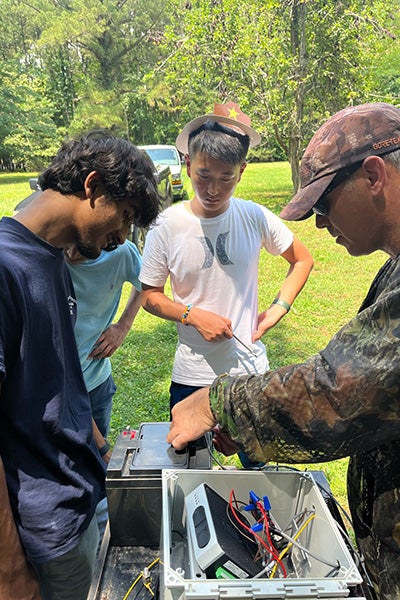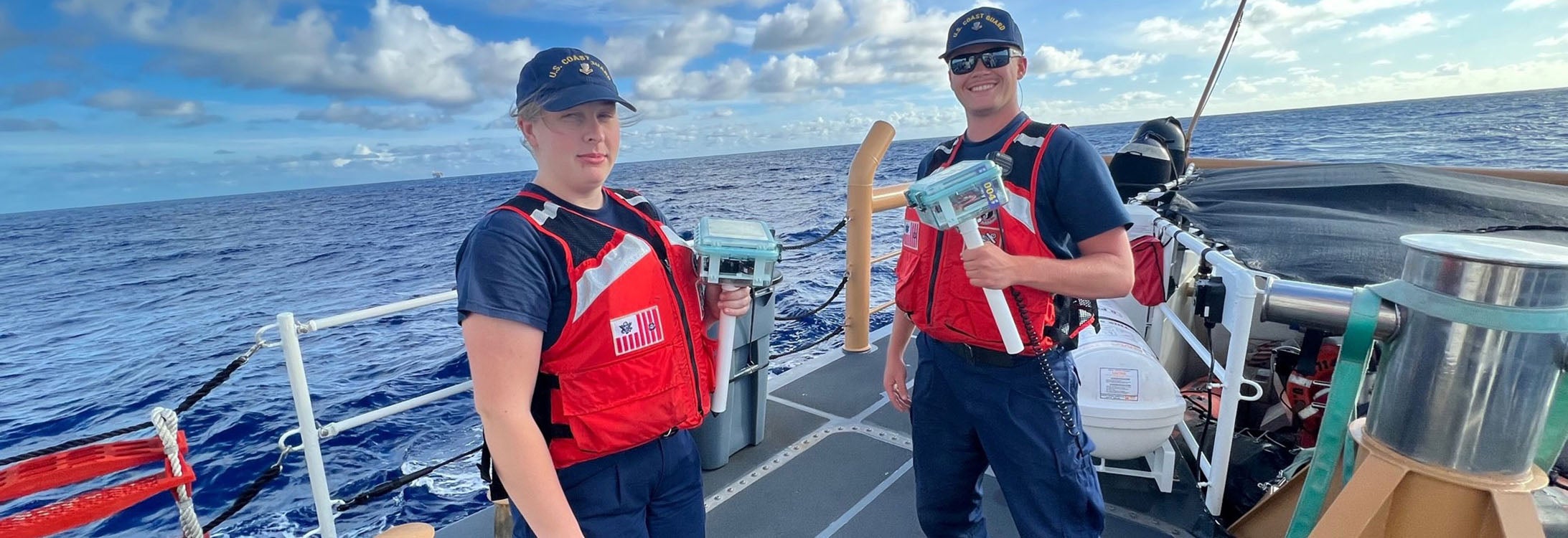SUMMER VENTURES
Program introduces high school students to climate change research, Coast Guard
Students who participated in this year’s Summer Ventures program were able to contribute to climate change research on ocean currents.
East Carolina University College of Education Associate Dean Dr. Dan Dickerson led a class on global environmental monitoring that allowed students to study existing data from the Mediterranean while also working on the buoys that would be deployed near Morehead City.
“There’s a feedback loop between the heat and the oceans, how that affects the currents and weather and climate,” he said. “We’re looking at the currents to see how they’re changing over time and whether or not they are still consistent with historical computational models of how the currents should function.”
Summer Ventures brings high-achieving students from across the state to ECU and three other UNC System schools to participate in a four-week residential summer research experience.
“ECU’s Summer Ventures in Science and Mathematics is unique in that all faculty are Ph.D. level trained professionals, which makes the experience a snapshot into the world of an undergraduate or even graduate research student’s life,” said Dr. Shawn Moore, Center for STEM Education director. “Our faculty emphasize hands-on learning to take advantage of the state-of-the-art laboratories and other facilities that ECU has to offer.”
This program helped students expand their perspective on research, college life and more. In addition to their coursework, students participated in activities every evening with their Summer Ventures group.
“I made some of the best friends I could ever imagine there,” said Sandy Sathis, a senior at Green Hope High School in Cary. “A good social life also doesn’t correlate with a bad education. The professors and facilities were amazing. Every student worked with new technology and experiments that they had never witnessed before as high schoolers.”

During Summer Ventures, students were also able to fix instrumentation at Merchants Millpond State Park.
Many of the students in Dickerson’s class credited the course and Summer Ventures with helping them learn a variety of new skills that will aid them in their future education endeavors.
“Summer Ventures was an incredibly enriching experience,” said Nan Jiang, a junior at East Chapel Hill High School. “I learned many things: how to write a research paper, how to work with sensors, how to talk with companies and how to work with people. It even gave me an insight on what I may want to do in the future.”
A vital partnership for this project was with the United States Coast Guard. Through many of his other research projects, Dickerson developed a working relationship with the Coast Guard and considers them a valuable partner.
“I’ve worked with the Coast Guard in Virginia every year for the past 13 years to run educational programming about pollution,” Dickerson said. “They are a real resource for the research community, teachers, students and educators.”
In July, the Coast Guard cutter Seahawk deployed six buoys into the Gulf Stream that were provided by ECU staff and students in the Summer Ventures program.
“Working with ECU has enabled the USCG to gain a better understanding of emerging technologies in the maritime domain, such as autonomous vessels,” said Andrew Jacot, Coast Guard lieutenant. “In early 2021, ECU launched an autonomous vessel, nicknamed Blackbeard, to research migration patterns of flounder in the mid-Atlantic region. We look forward to continuing our support for research projects from ECU and other institutions/organizations.”
Students also had the chance to tour the ship and learn more about Coast Guard programming, including the junior ROTC programs for high school students and opportunities for college students in maritime law enforcement, response and maritime prevention.
“It was a once in a lifetime opportunity working with the buoys and the Coast Guard,” said Sheel Patel, a junior at John T. Hoggard High School in Wilmington. “Using the knowledge we gained from our global environmental monitoring class, we were able to explain to the Coast Guard how to deploy and monitor the buoys. Tracking the buoys’ movement could facilitate data collection and help the Coast Guard with their maritime duties.”
